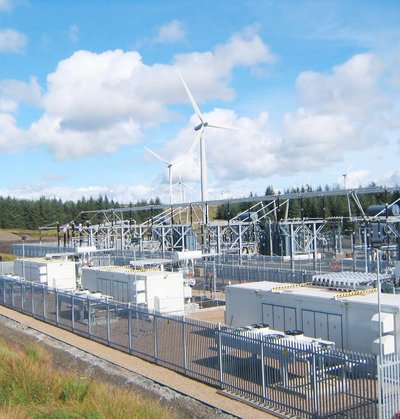Environmentally sustainable and grid compliant
Friday, 16 November, 2012
The exponential growth of the world’s population and our growing reliance on electricity has led to a dramatically increasing energy demand worldwide. According to IEC, International Energy Agency, over the last decade the average energy consumption per person rose by 10% while the world’s population rose by 27%. In order to meet this growing demand, energy supplies need to be adjusted in a way that is safe, reliable, cost-effective and, most importantly, environmentally sustainable. Taking these factors into consideration, it is no wonder that wind energy production has so rapidly gained in popularity.
The global growth of installed wind power has forced transmission system operators to tighten their grid connection rules in order to maintain the security and quality of the power system. Grid codes have been introduced, defining the technical parameters electricity generating plants have to fulfil to ensure proper functioning of the network. As a consequence, some commonly used turbine designs have difficulty achieving grid code compliance.
One such example is Europe’s largest wind park, Whitelee Windfarm, developed by Scottish Power Renewables. A recent extension project launched there, involving 75 new turbines, will add another 217 MW of capacity to the existing 322 MW.

One of the biggest challenges faced by this impressive investment was that strict national grid code requirements made it necessary for the turbines to compensate for the specified reactive power. Because the wind turbines in general have more inductive than capacitive output capability, the reactive power contribution of the wind farm was not sufficient, thus calling for additional compensation equipment.
In response to this problem, ABB offered a holistic solution based on PCS 6000 Statcom. As a robust and reliable reactive power compensation product, the Statcom was the ideal option. This unique line-up of state-of-the-art technology adds the missing functionality to the wind farm, making it compliant with the national grid code.
As a pure static device with no switched passive elements, PCS 6000 provides outstanding performance for both steady-state and dynamic operation. In addition, the fast dynamic voltage control which operates during balanced as well as unbalanced grid faults (fault ride-through) allows the system to meet the demanding requirements specified by the transmission operator.
ABB supplied three liquid-cooled PCS 6000 units of ±15 MVAr each at 33 kV, installed within shipping containers. The scope of delivery also included transformers as well as an external water/air heat exchanger. In addition, ABB was responsible for project management and commissioning.
The main features of the PCS 6000 system is its efficiency (from 97 to 98.5%) and high reliability. Modular construction utilising leading-edge technology makes Statcom’s design highly configurable and versatile, thereby enabling both indoor and outdoor placement. The solution is particularly competitive in terms of installation time and space requirements. Furthermore, high efficiency and low maintenance (MTTR <30 min) lead to low operational costs. Owing to maximum flexibility, the solution may be applied to a wide range of applications. These include wind farms, utilities with weak grids or fluctuating reactive loads, as well as industrial applications.
The successful commissioning of ABB’s Statcom units took place in September 2012. With the application of ABB’s solution, Whitelee Windfarm is now in the final phase of its ambitious plan. Gaining additional capacity, Whitelee will be able to generate 539 MW of electricity - enough to power the equivalent of over 304,000 homes.
Sampling gases and volatile liquids: essential strategies
Following gas sampling best practices can improve product output and reduce fugitive emissions.
Planetary gearbox supports global success of composting solution
New Zealand company Global Composting Solutions is having international success with its...
5 things to consider before implementing a UPS
UPS systems play a vital role in the health of your control cabinet: consider these five things...












